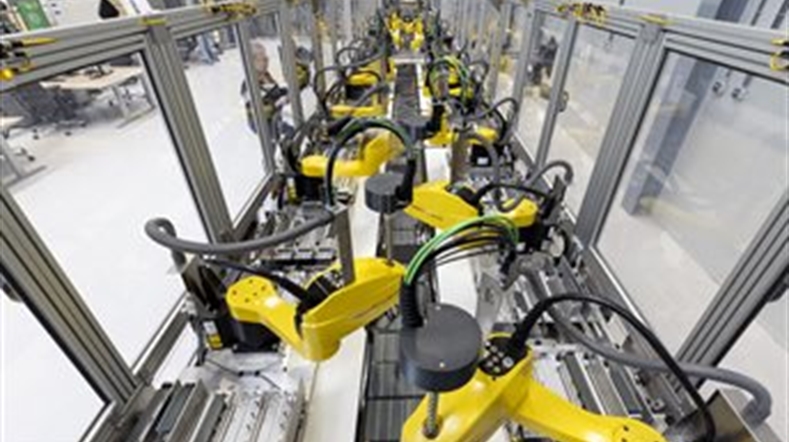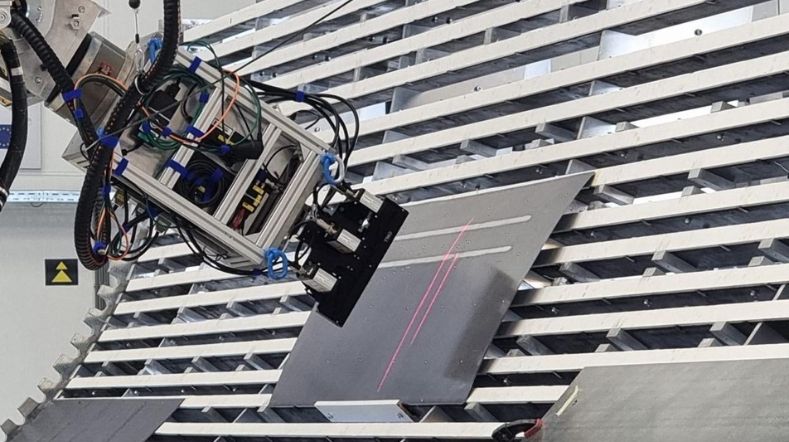Smart response: measuring the impact of innovations
Responding to the acceleration of manufacturing industry digitalisation and, at the same time, achieving the desired economic and social impact. That’s what Smart Response is about. As part of Smart Response, we study the impact of innovative technologies: from changes in ecosystems, sectors, and the labour market, to the effect on new business models.
The manufacturing industry in the Netherlands has the ambition to become the most flexible production network in Europe with the best digital connections. We’re making an important contribution to achieving this ambition. But whereas flexible manufacturing, smart work, data sharing, and digital twinning focus on technical research, smart response is about strategy and policy. It completes the approach.
‘We’re increasingly taking a multidisciplinary approach in our programmes and projects,’ says Claire Stolwijk of TNO. ‘So, we connect the different technical focus areas with strategy and policy. In this way, we orchestrate the digitalisation of the manufacturing industry and ensure that the basic preconditions are also properly organised.’
4 main propositions
The smart response programme has 4 main propositions.
1. Trend analyses
To begin with, we carry out trend analyses, with which we identify and interpret developments at an early stage. What is the expected impact of technological smart industry developments on the economy and society? And how do we ensure that the economy and society respond well to this?
The coronavirus crisis and supply problems from distant countries are fuelling the debate on whether industry should become self-sufficient again. Stolwijk: ‘We’re dealing with global value chains and end users abroad. But we do make choices regarding the technologies in which we want to be strong and have an impact, so that we can invest in them and maintain our lead.’
2. Providing insight into opportunities and challenges
The second main proposition is to support decision-making by providing insight into opportunities and challenges. Whereas in business-to-consumer platforms (B2C), for example, oligopolistic trends (such as Amazon Web Services) and monopolistic trends (such as Facebook) are clearly emerging, this is not yet the case for business-to-business platforms (B2B).
‘In the B2C platform market, we see enormous market power – with Facebook, for example. There’s no good market mechanism anymore,’ Stolwijk explains. ‘The B2B platform market is currently fragmented. Too much fragmentation is inefficient and results in higher costs, as suppliers, for example, are forced to use a wide variety of platforms, each with its own standards. At the same time, it means that you have to be careful not to go down the same road with B2B platforms as with B2C platforms. We help prevent that from happening with both policy and technological solutions.’
3. Orchestrating major innovation programmes
As a third main proposition, we orchestrate large innovation programmes with public-private parties. For example, there are 7 field labs in the Smart Industry Hub South-West (SMITZ), which develop Smart Industry solutions in collaboration with companies. We orchestrate the innovation programme with smart response. This includes bringing parties together, ensuring a shared vision, setting up and coordinating the programme, and monitoring its implementation.
An example of a field lab that has used smart response’s expertise is the Smart Connected Supplier Network (SCSN) at the Brainport Industries Campus in Eindhoven. The partners involved focus on digital collaboration in the supply chain of large companies such as ASML, Thales, and Philips Healthcare, enabling them to exchange data more efficiently and reliably and to improve the time-to-market. Based on analyses and simulations, we made added value for manufacturing companies transparent. For example, cost savings and easier access to a larger network of companies.
4. Monitoring impact
Finally, the fourth main proposition is to monitor and measure the impact of technological innovation and innovation programmes. What does an investment in an innovation programme yield in terms of job creation, new technologies, patents, and so on?
Want to know more or participate?
Can we help you by measuring and interpreting the impact of smart industry or by providing insights into the cost savings generated by investments in new innovations? Do you have questions about new business models, for example, because you’re considering moving away from selling products and towards servitisation? Or are you looking for someone who can increase the impact of your innovation programme? View the projects on our website or contact Claire Stolwijk directly.
Get inspired
Partnering for mutual progress


TNO spin-off Scenexus secures 1.6 million euro investment


Scale up: manufacturing throughput and quality


Non-destructive inspection


Strategic autonomy: digitalisation and value chain integration


